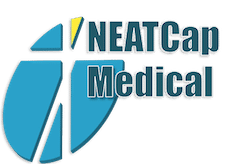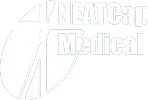Addressing Neonatal Noise Exposure
NEATCap’s approach and solution to the adverse effects of neonatal noise exposure recognize the early positive results achieved with research prototype ear muffs [E1] while addressing the special form, fit, usage, and functional requirements unique to the neonatal ICU population and care environments.
Our product development path followed a number of steps. First, we verified the nature and scope of the noise exposure problem based on the clinical experience of our team members and associates, actively working in NICUs. We then studied the literature, visited many NICUs, and spoke with practitioners about their understanding of the problem, and their knowledge of prior and current attempted solutions. We found general awareness of the AAP noise exposure guidelines, but poor understanding of the basis for those guidelines, the nature of sound and noise, as well as the clinical ramifications of excessive noise exposure. We also found that in spite of multiple attempts, no existing solution could meet the AAP noise exposure guidelines, permit appropriate auditory stimulation (when desired), and was safe, easy to integrate with best-practice care protocols, and cost-effective.
In our research, we also identified a gap in the approach to prior sound measurements: a Single Value decibel representation (overall sound level in decibels) does not indicate the type of sound. There are many different sound signatures (frequency distributions) that can give the same Single Value. There had been no comprehensive, detailed sound analysis identifying the sources and nature of noise in the different neonatal critical care environments.
Therefore, we developed DONNE — Detector Of Neonatal Noise Exposure — a unique acoustic test model that simulates the head of a preterm infant to measure what an infant actually hears in different critical care situations.
In NICUs, we used DONNE inside of incubators and in open radiant warmers to measure and record the sound levels and frequency spectra associated with NICU equipment, and caregiver practices. We compared those measured spectra and sound levels with literature data on fetal hearing [N19], and the sound environment of the fetal sheep [N20], the best animal model known for simulating the human fetal environment.
We first discovered that NICU patients are most often exposed to intermittent loud sounds at mid-to-high frequencies. These sounds are generated by monitor alarms, and the equipment and care practices required to keep patients alive in the NICU. Under normal circumstances, such high-frequency sounds would be blocked from a developing fetus by the pregnant mother’s body.
In collaboration with our clinical partners, DONNE also has recorded sounds inside incubators and on stretchers during many helicopter and ground ambulance transport runs. Analysis revealed that, unlike in the NICU, the sound environments of air and ground transports are consistently loud and dominated by low-frequency noise.
Literature data reveals that the sounds during MR scanning are consistently loud at all audible frequencies, and can be especially loud where hearing is most sensitive [M7].
From this research, we realized there could be no “One-Size-Fits-All” noise protection solution that adequately addresses the range of neonatal patient care experiences and their varying intensive care sound environments.
Our Solution – DREAMIES and DREAMIES T-M
We used this information to develop two innovative, passive hearing protection devices for neonates undergoing hospital critical care:
DREAMIES, with sound-blocking performance that approximates the natural noise protection provided by a mother’s body during pregnancy — preferentially filtering out high-frequency noises, and still allowing some transmission of low-frequency human voice — for use during routine care of premature and NAS babies
DREAMIES T-M, with broad-spectrum sound-blocking performance — for use during ground and air hospital transport and magnetic resonance imaging (MRI) examinations. DREAMIES T-M is MR Safe based on testing by a premiere MR Safety testing laboratory.
Both devices are designed with the special form, fit, usage, and function requirements of neonatal critical care in mind.
Working Together with - The Quiet Experts

INQUIRE
Via online form on our website and we respond with educational materials.

MEET
Schedule a conference call or Zoom meeting with NEATCap.

DISCUSS
We explain the technology and applications associated with products for client interests.

QUOTE
Request a quotation on line or directly to NEATCap Sales.

ORDER
Place your order directly on our website for sample or small quantities. Larger order quantities please request a quotation directly by contacting us directly.



